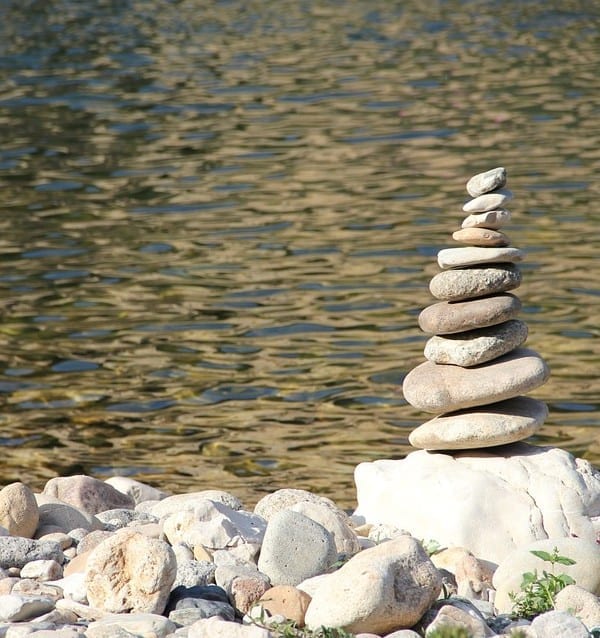So this thing called “spiritual direction.” What is it? Who does the “directing,” if anyone? What is the purpose of spiritual direction? What do I mean when I say it?
Spiritual direction can be a slippery concept.
What is Spiritual Direction?
At its base, spiritual direction/mentorship/accompaniment is as old as spiritual practice, which is to say, probably about as old as humanity. Spiritual direction is a relationship between two people, one of whom is a spiritual traveler or seeker, and the other of whom has some skills and experience in being a guide for and witness to the journey.
Spiritual direction as a more formal practice has come from Roman Catholicism into other branches of Christianity and then into other traditions altogether. As a Wiccan priestess and Unitarian Universalist minister, I bring my own particular spin to the practice.
Why Enter into Spiritual Direction?
There are as many reasons to enter spiritual direction as there are people considering it, and more.
Perhaps you have a particularly knotty concern, a question of discernment and struggle.
Perhaps you need to be reminded that it is always permissible, even imperative, to love yourself.
Perhaps you want to learn how to come closer to a felt sense of the Sacred throughout your life.
Perhaps you’re feeling alienated and isolated and want to understand what is happening in your life.
Perhaps you are a leader—spiritual, religious or otherwise—and need support in your work.
Perhaps you feel consistently uncentered and ungrounded, and you want to find a way to feel more whole and stable.
These are only a few of the reasons people seek spiritual direction. What might yours be?
How Do I Offer spiritual direction?
Once someone has decided that they have a reason to come to spiritual direction, the question becomes, “What does Catharine do?” or “What does Catharine have to offer?”
For me, spiritual direction has three distinct components.
- Creating and holding space. This piece means that I work to create a space founded on love and my own prayer and practice. It is a space in which I hope the traveler can feel brave. Brave space is not the same thing as safe space. There is no safe space in this world. But there are spaces in which we can feel trusted and held in care.We can inhabit spaces that allow us to be authentic without fear of judgment or criticism. It is my goal to create this kind of space. Sometimes I open and hold space by way of prayer or ritual, silence or simple initial inquiry about what brings the seeker to our session that day.
- Listening to hear. Listening to understand. Listening with true, deep empathy. Listening is the core practice of spiritual direction, and it is what allows me to ask gentle questions with friendly curiosity, to reflect the feelings and concerns of the one traveling with me, and to come to know them more deeply.
- Bearing witness. By opening and holding space and listening, I become able to bear witness to whatever the traveler is going through or reveals in our session. To bear witness is to hold what is given with tender hands, to honor the courage it takes to speak the truth of one’s heart, and to reflect that honor back to the seeker.
Who’s Directing Here?
There are several answers to this question.
One answer is that the Spirit of Life, the Spirit that lives within us and animates our souls and also spins the Universe, is the director. It is the task of the traveler and the guide to attend to the movements of this Divine Director.
Another answer is that the traveler, the seeker is directing. It is their concerns, their practice, and their relationship with the Holy that is most important. It is they who bring what they have to the session.
There are other answers: The interplay of intuition between the two people and the Divine; the silence that calls up unlooked-for concerns, questions, and answers; the rituals that set the time apart from other time.
The most important thing, though, is this: The “director” is not the director. The guide is someone who has walked the paths of spirituality, practice, and maybe religion, for a while, and who offers themself to be in service to the traveler and to the Divine. This guide does not direct, but rather accompanies, holds space, listens, and bears witness.
What is the Place of Spiritual Practice?
I believe that spiritual practice can change our lives. I know it has changed mine. When I am praying, singing, being mindfully silent, making ritual, and writing regularly, I am more centered, happier, and more capable of keeping the complexities of life together than I am when my practice is spotty.
Spiritual practice is something I encourage in the travelers who move with me through the spiritual life. I don’t have a lot of preconceived notions about what that practice is, however.
As I mentioned above, my practices are varied. Notice that none of them is sitting in meditation for 45 minutes. We each have our own ways. Sitting meditation, walking meditation, chanting, singing, performing rituals, mindfully cooking for those we love…there are “a hundred ways to kneel and kiss the ground,” as we are told Mevlana Rumi wrote.
Talking Further
Might you like to explore the possibility of working together?
I offer you a no-cost, half-hour call (by phone, Skype, or Zoom—your choice) just to talk and see whether we might want to work together. Perhaps we might talk about your concerns and questions. Perhaps we might talk more about what I’ve begun to cover here: How I do spiritual direction and what your needs are.
Feel free to go here, schedule a half hour, and we’ll get together, just to see…


